eXtensions - Monday 18 November 2024
By Graham K. Rogers
![]()
As an alternative exam format, Year 2 Electrical Engineering Students were given a challenge to produce a workable solution to a needs statement within 5 hours. The format and development are discussed, with a result that suggests the students have good potential.
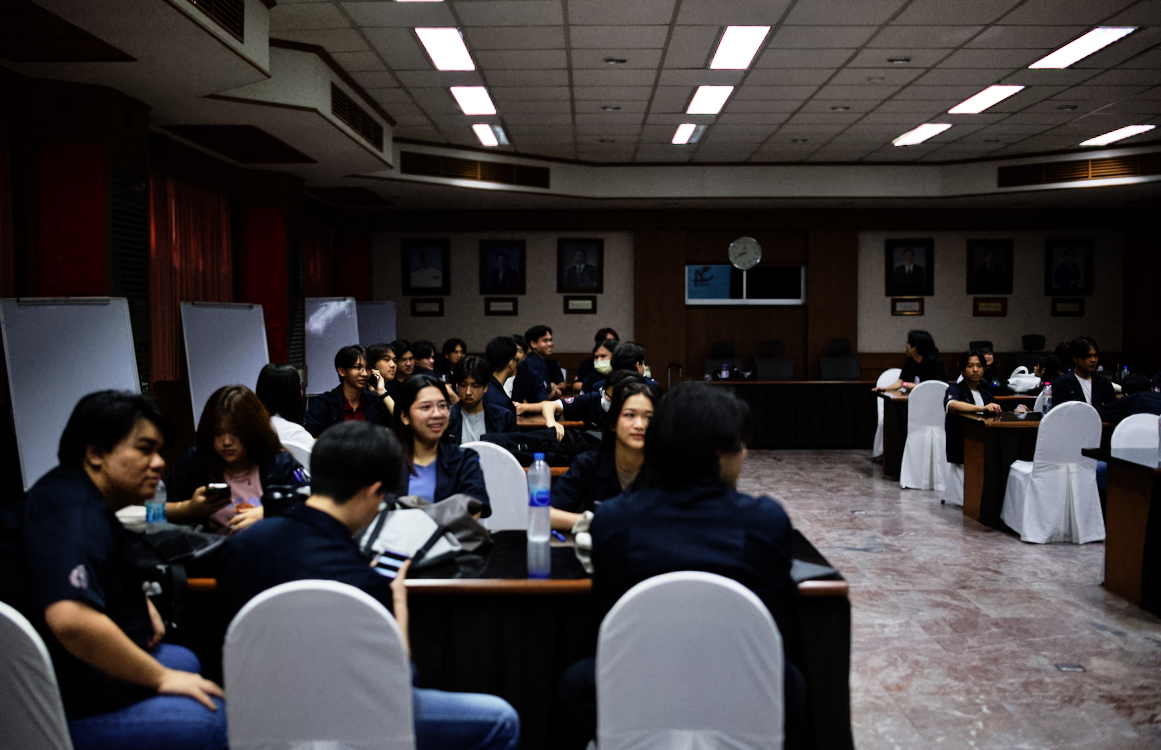
|

|
Engineering is a practical discipline, backed up by calculations: physics, maths, et al. There is also a design element that requires an intersection of technology and creative thinking. Steve Jobs sometimes referred to the intersection of technology and Art.
Engineering students in Thailand must take an internship at the end of their 3rd year. This is usually with a respectable company (like Alsthom, Thai Petroleum or SCG Cement). In their final year the students (in groups) are also required to produce a Senior project. As part of the development process, the Faculty of Engineering at Mahidol University has several activities during the year that give students additional skills, outside the academic curriculum. These include helping out at camps for high school students, and advising students at Open House events.
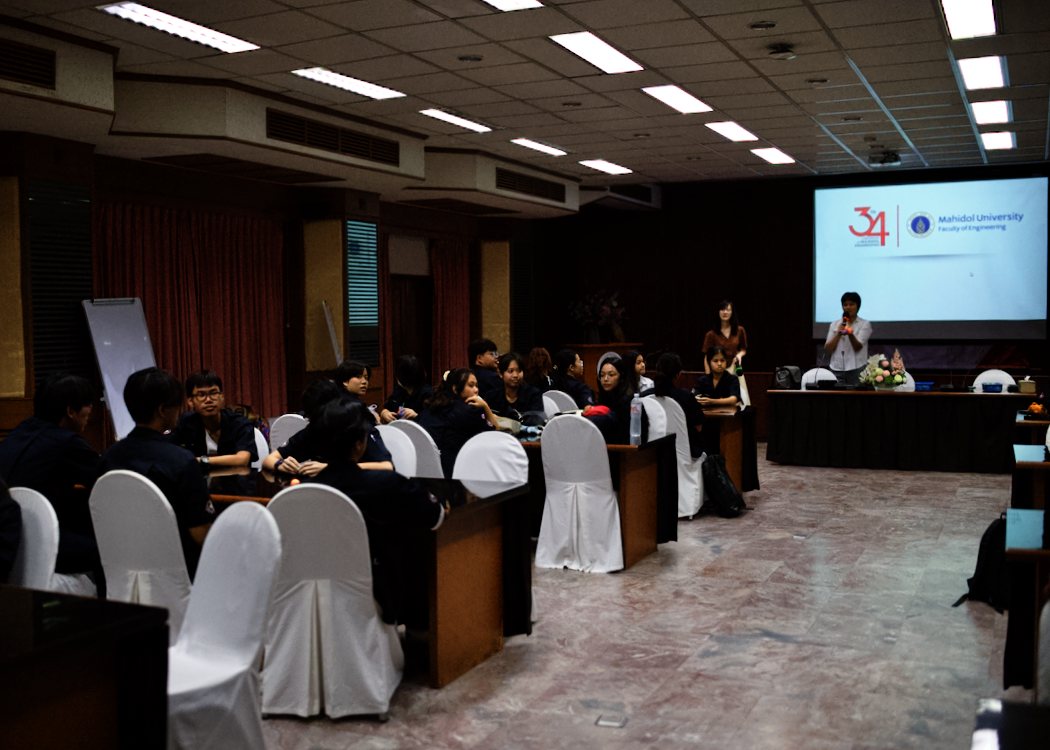
|
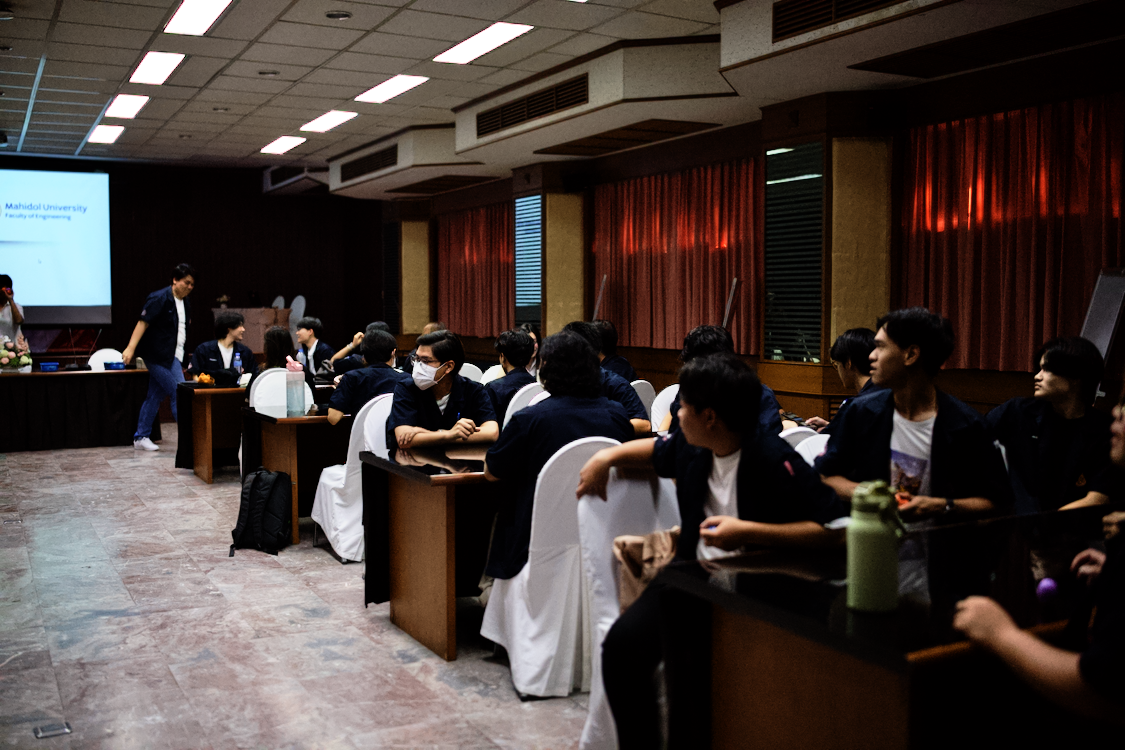
|
A similar approach was used for this year's exam of the 2nd year Electrical Engineering course, Introduction to Engineering Design, although there were some local changes to the format. The Design Challenge was set for 0830 on Monday morning (18 November) and most students made it in time. At the initial signing in, each student was handed a colored, plastic egg at random. Inside each egg was a slip of paper with a number. This decided the group the student would work in.
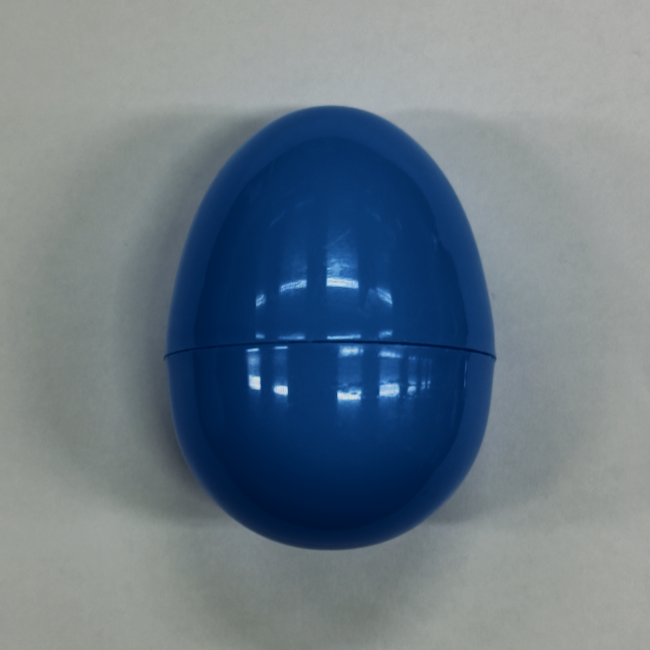
|
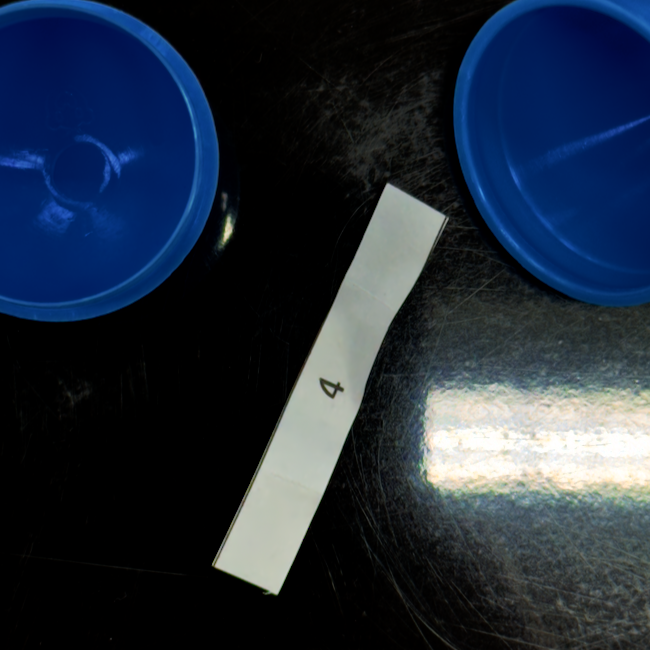
|
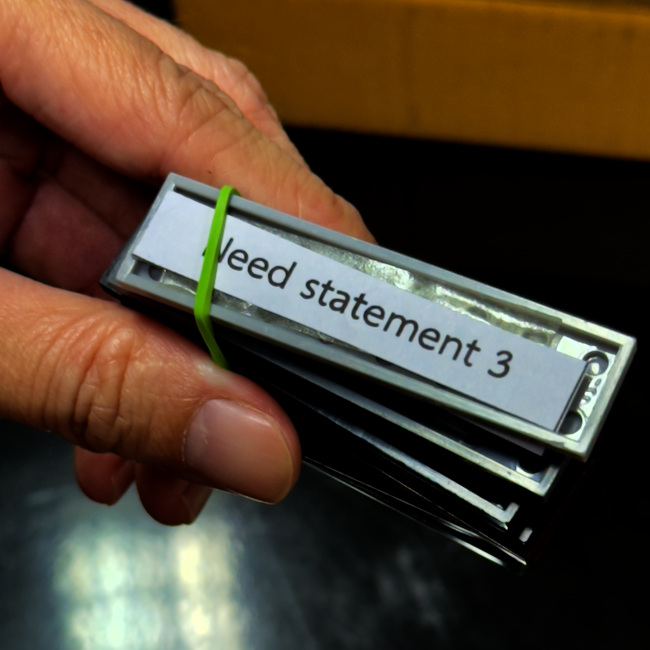
|
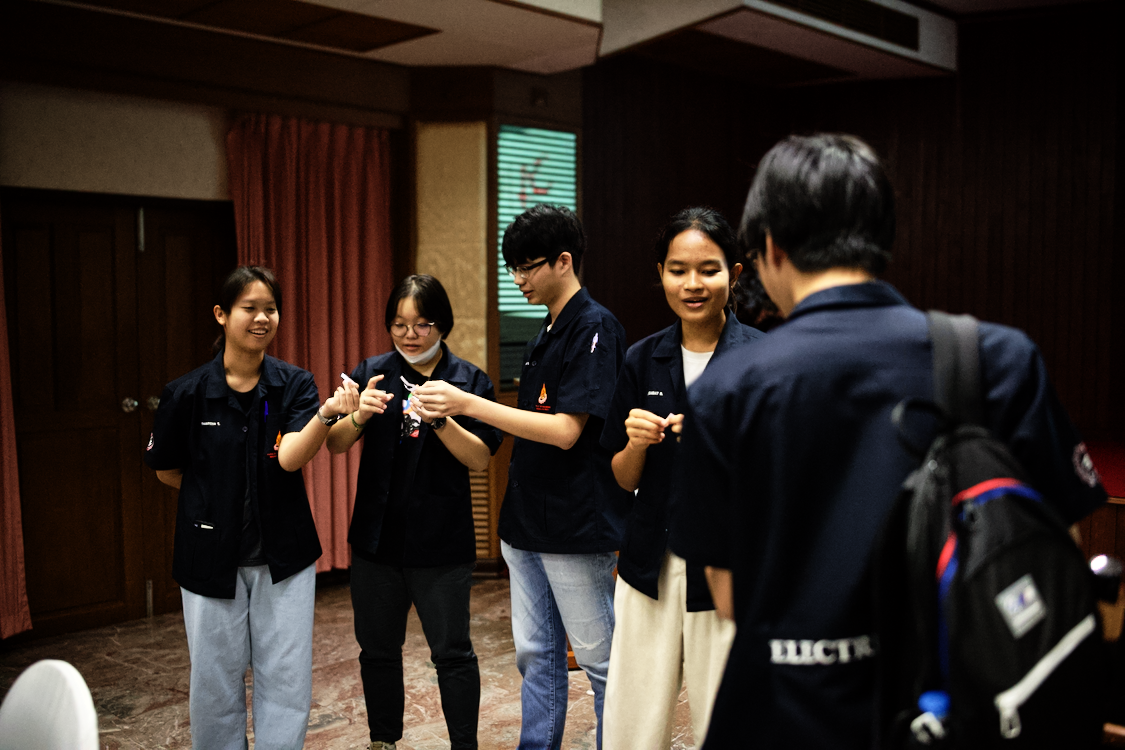
|
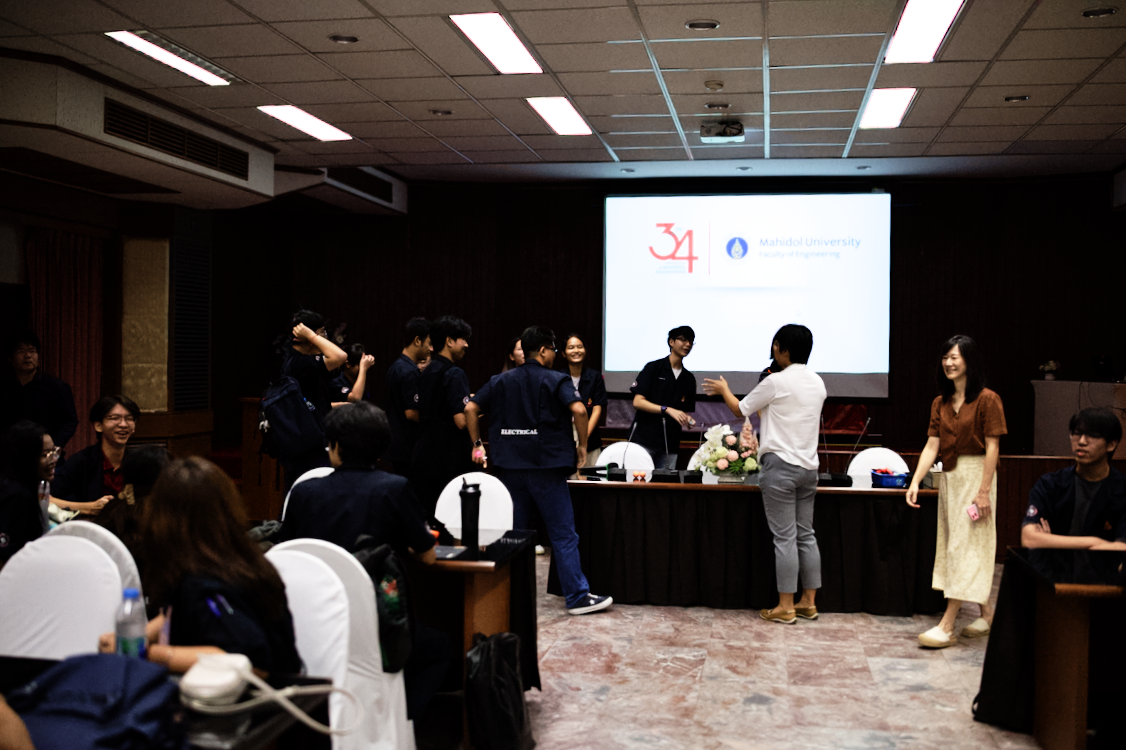
|
Once 8 groups were formed, one student was delegated to go to the front of the room and choose a token. On this was a number that referred to the specific needs statement the group would work on. The needs statements selected were (in brief):
One further needs statement, Reminders for task management, was not selected.
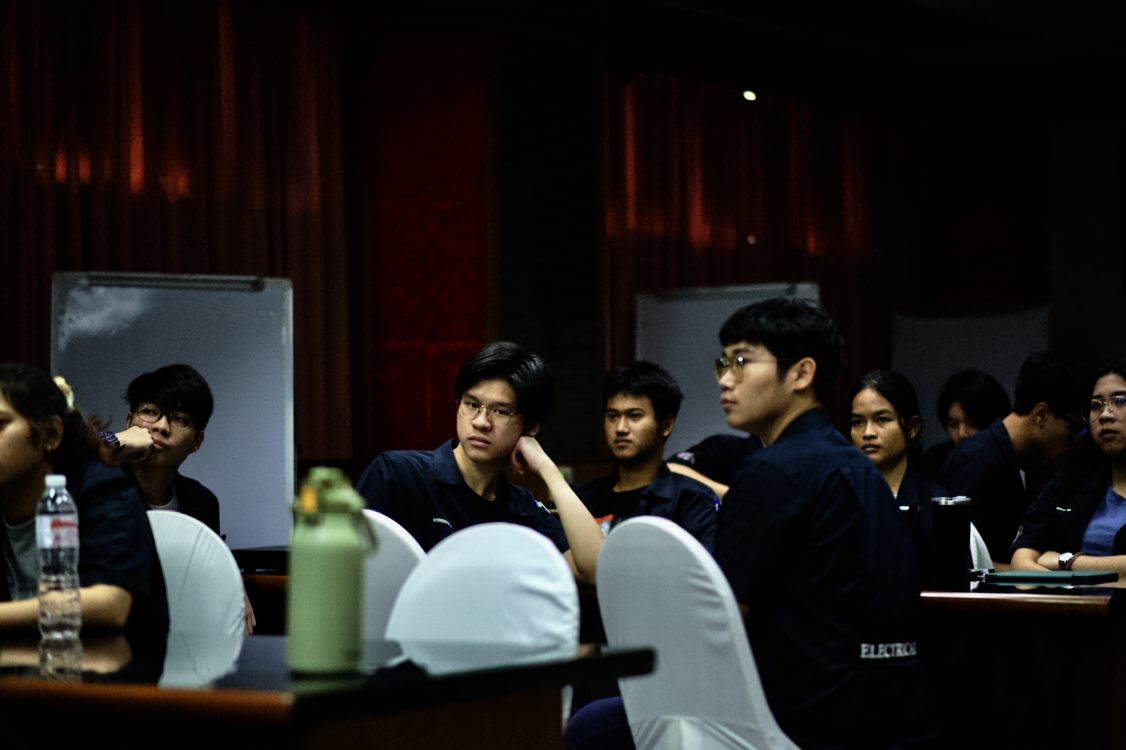
|

|
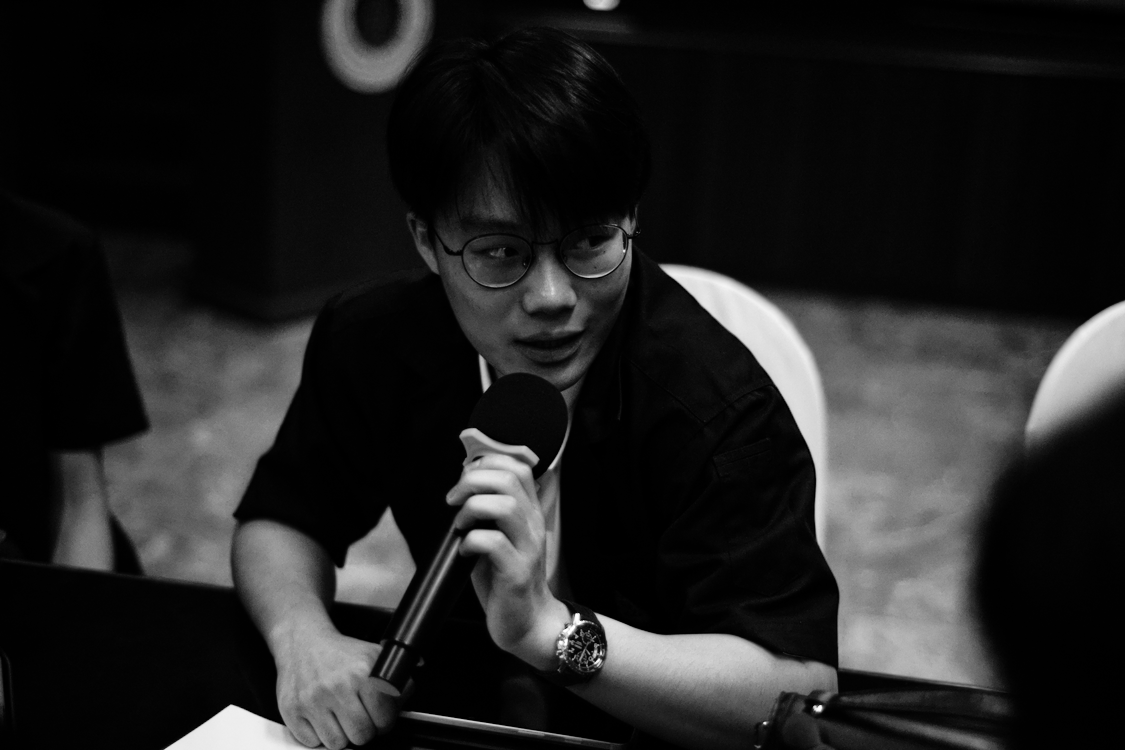
|
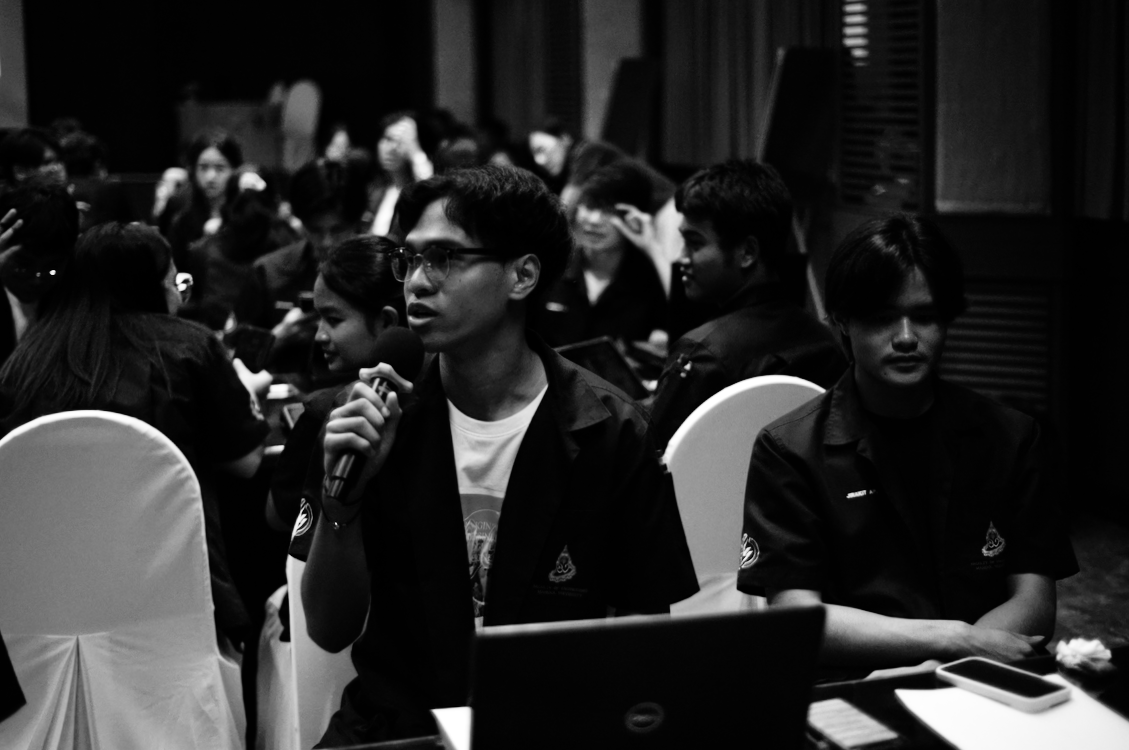
|
They were given a reminder at 11:00 that the outline designs should be finalized by 11:45. From this time, until 14:00, the groups were able to work on prototyping, with presentations of their work following. Just before lunch (12:00) the groups were asked to provide a brief update to the problem and what they saw as their potential solution, as well as the steps they were taking to produce a basic prototype.
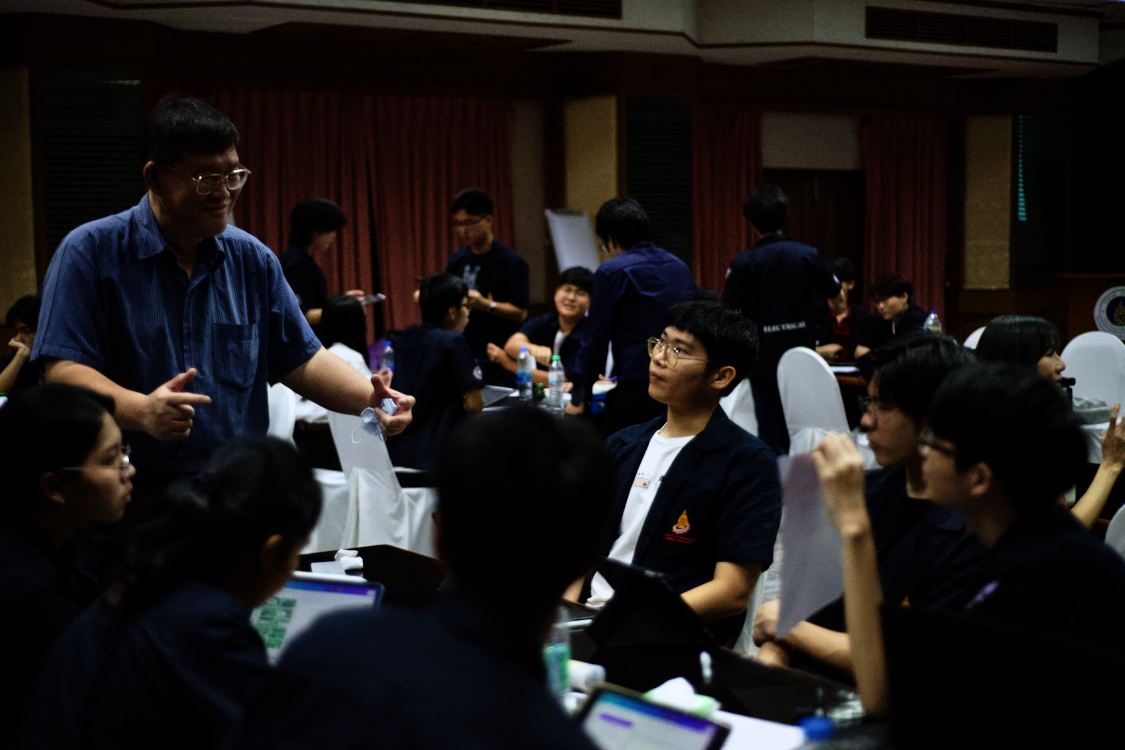
|
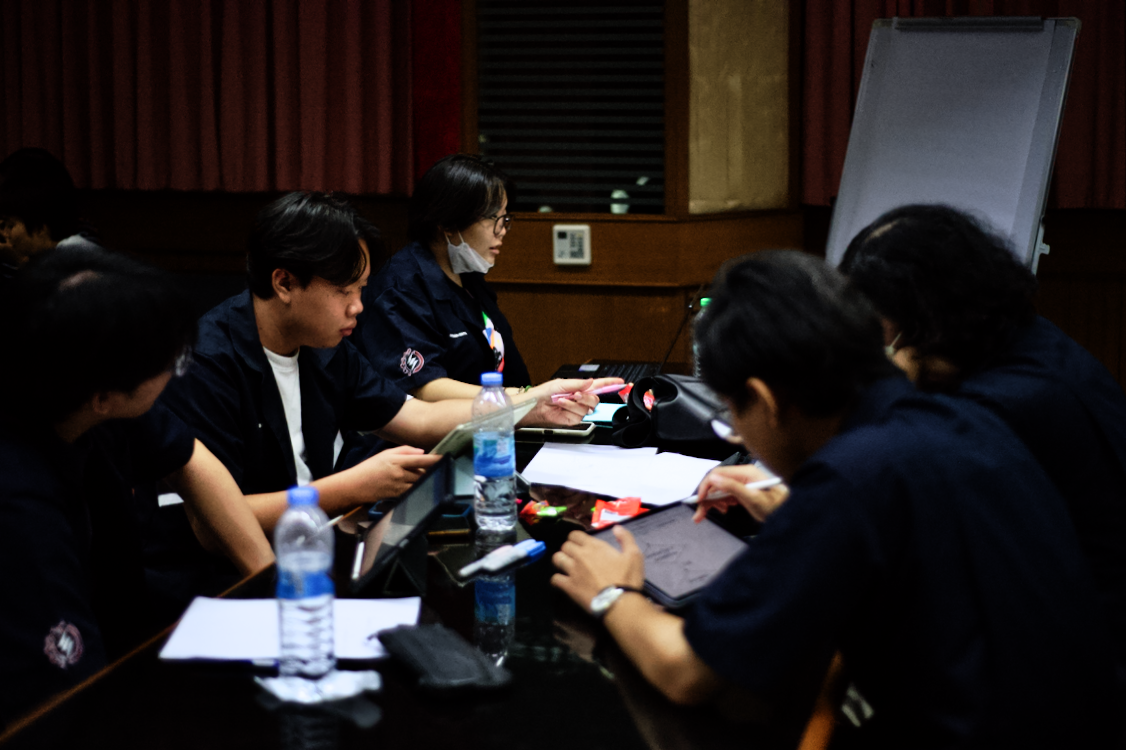
|
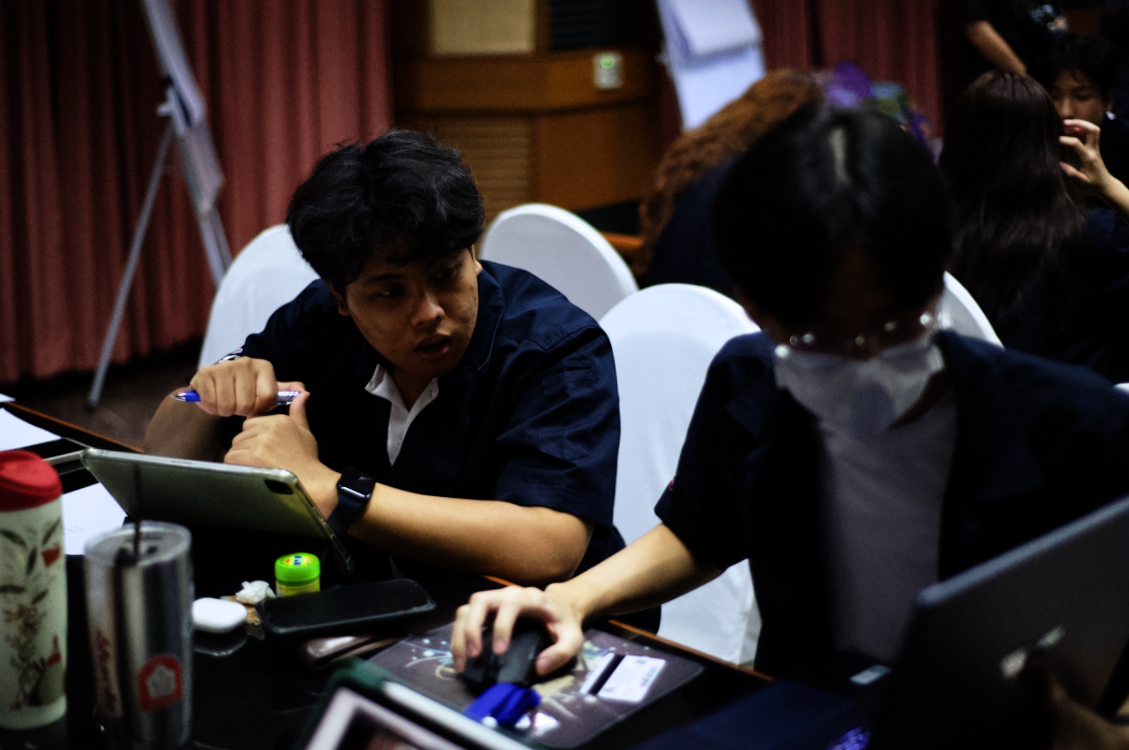
|
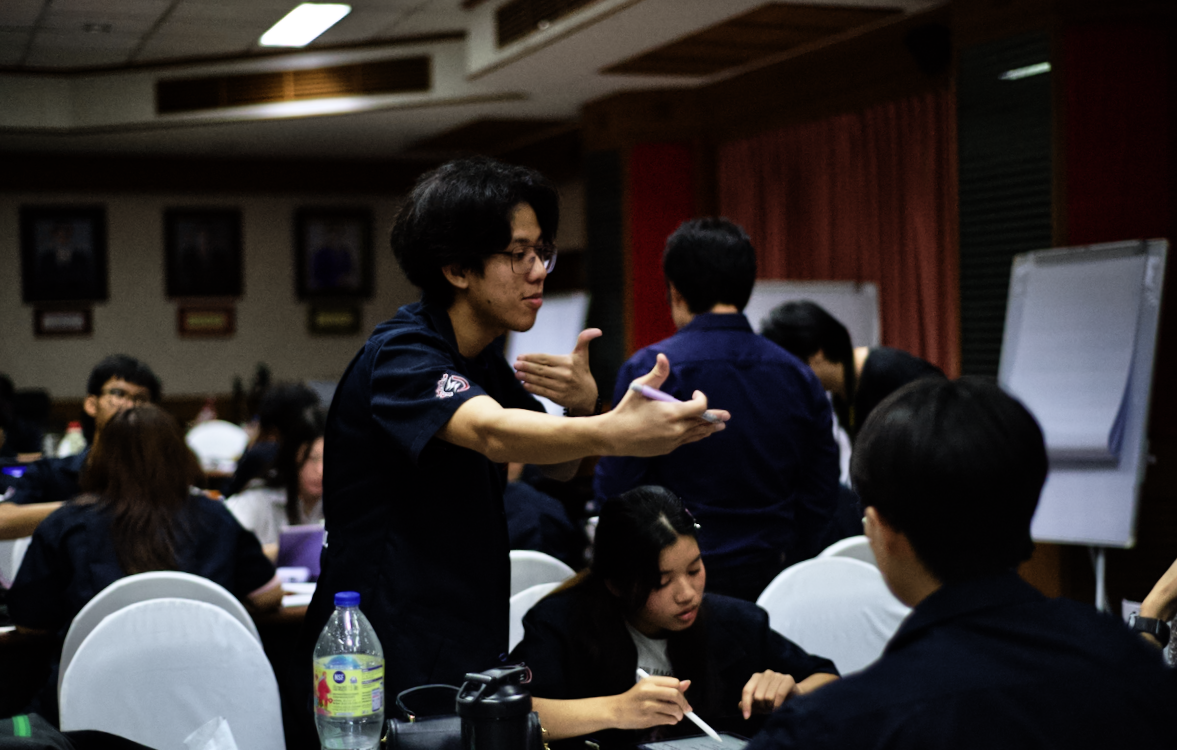
|
After lunch the students were provided with scrap materials: plastics, card, cartons, wood and other materials. These were to be used, if students wanted, to come up with some solid design that would go some way towards illustrating their presentations in the limited time available.

|
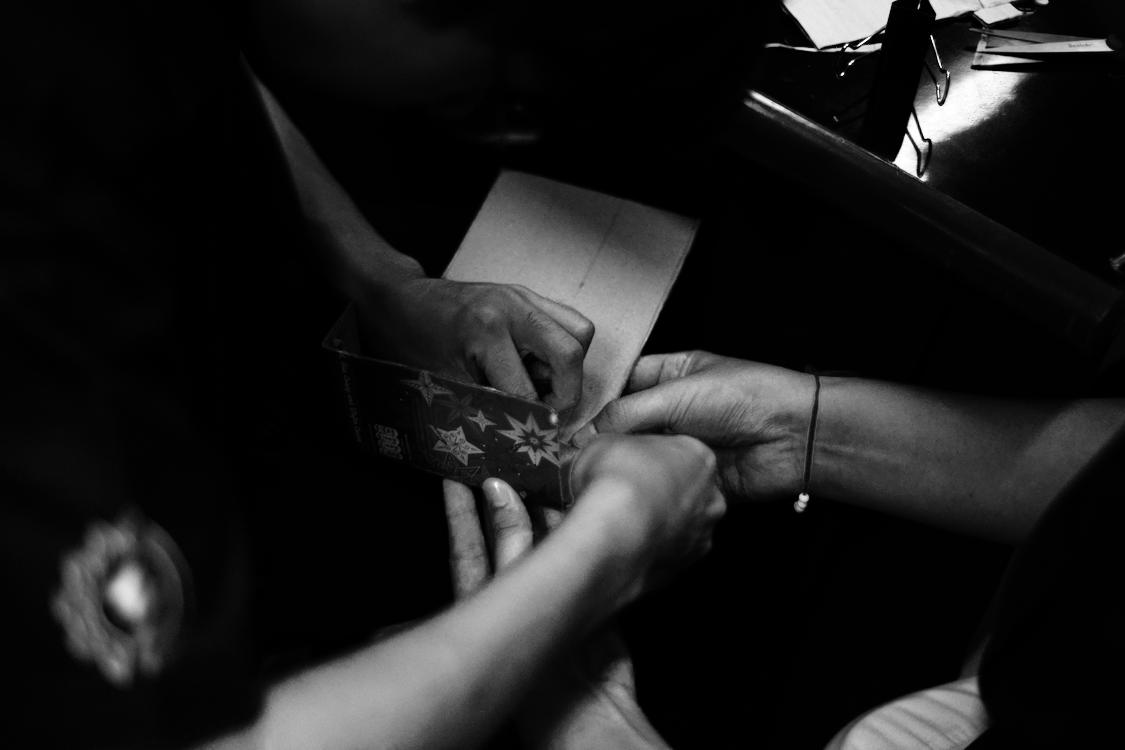
|
At 14:00 it was time for the presentations. Each of the 8 groups was given 5 minutes to present and a further 5 minutes (or more) to field questions from the Electrical Engineering experts in attendance. The prototypes, made of basic materials, needed some explanation and a degree of imagination to understand the student intentions, but they were generally on the right road. I noted that with a course and exam format like this, it is not just the solution that is important, but the thinking and analysis that take place during the development of ideas.
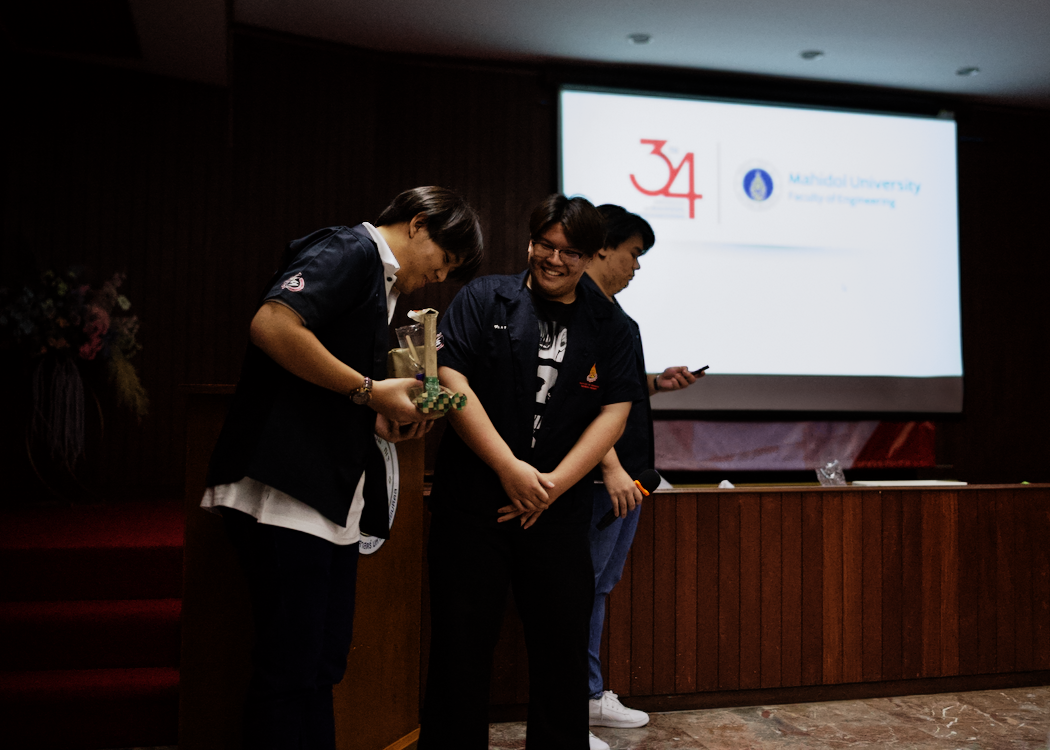
|
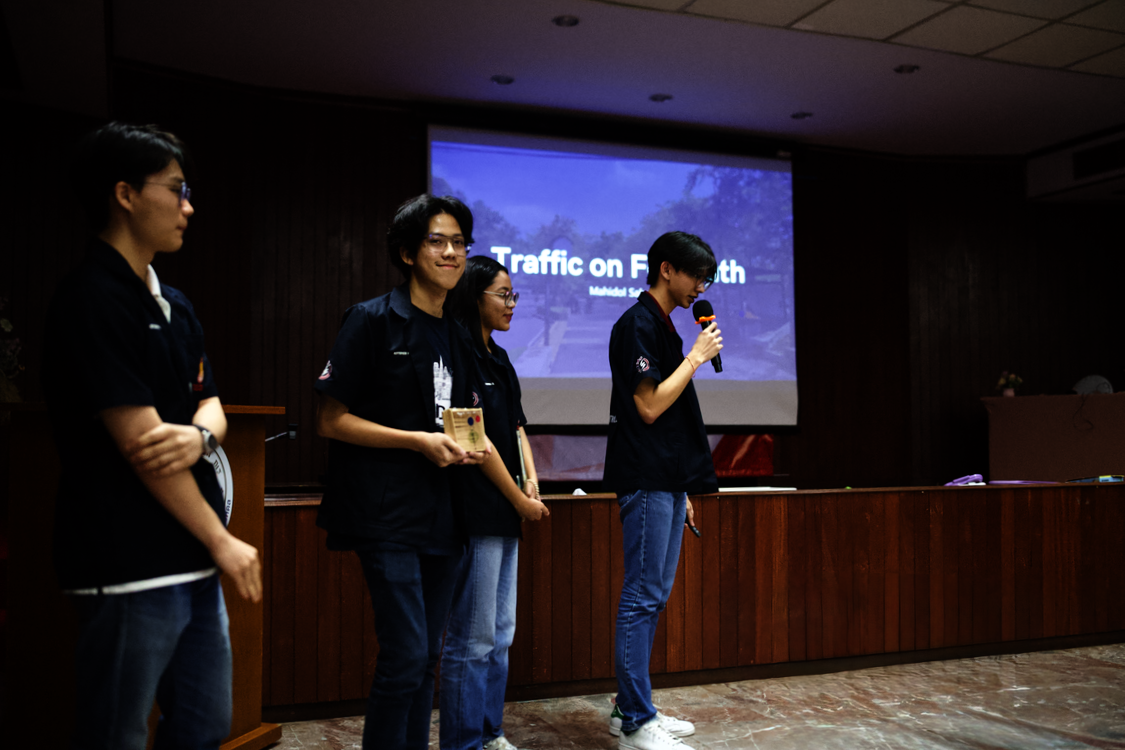
|
Considering that these students were only in the 1st semester of their second year, they conducted themselves quite well and my Thai colleagues were pleased. High school education here is often inflexible and the first year foundation courses offer little room for independent thought outside the curriculum. They responded well to the flexibility of the Engineering Design course and the ideas presented had some potential: at least one has the flavor of a senior year project.
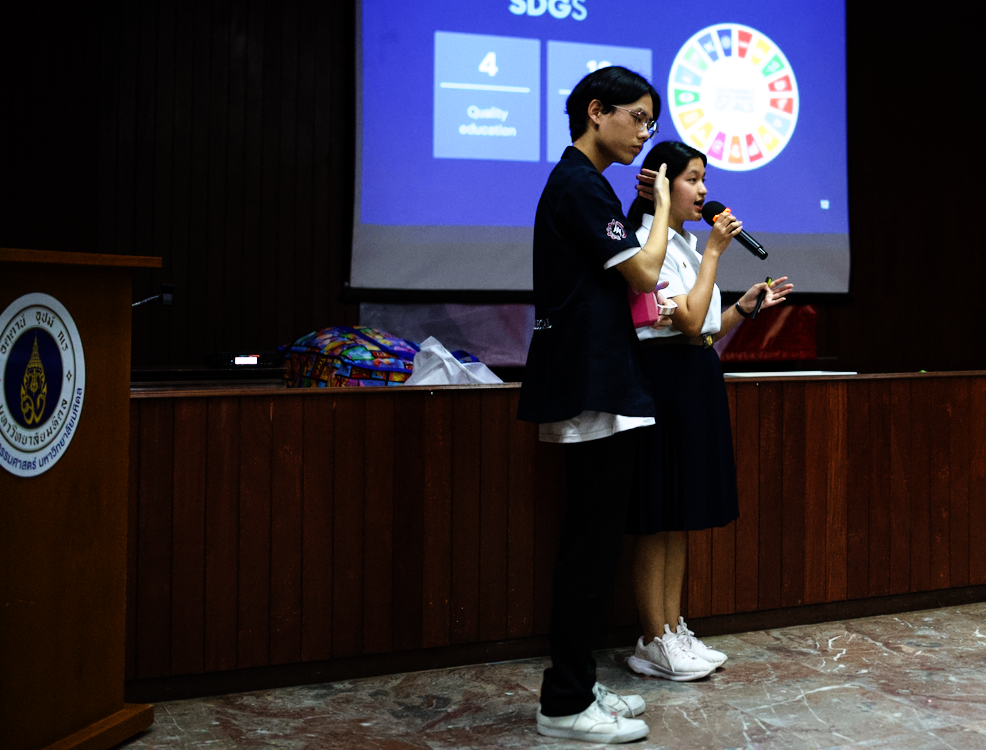
|
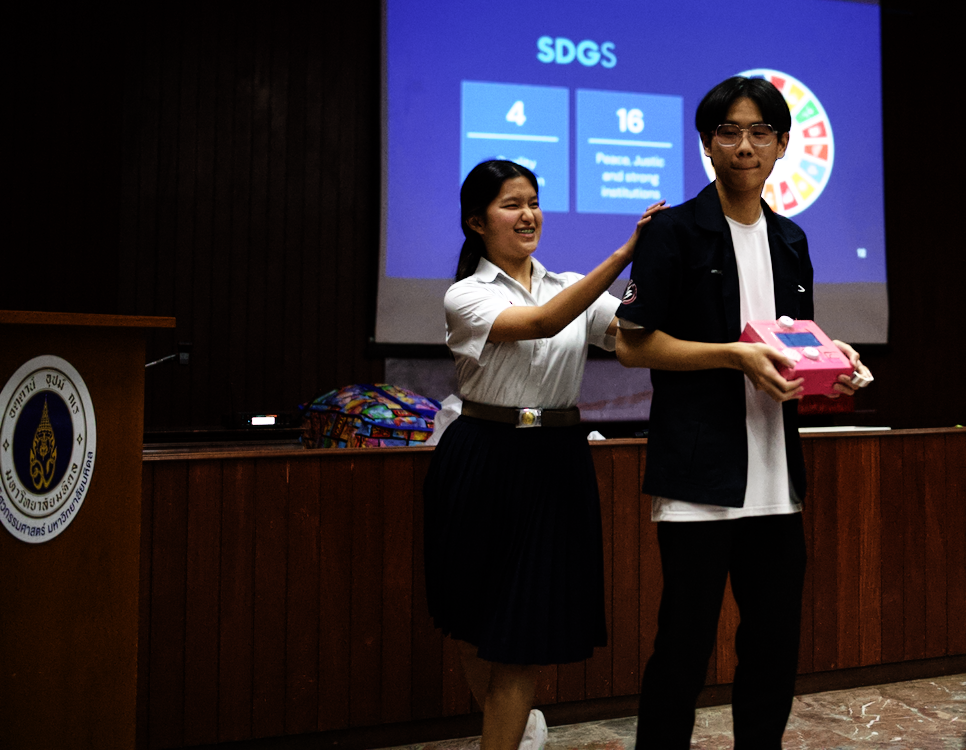
|
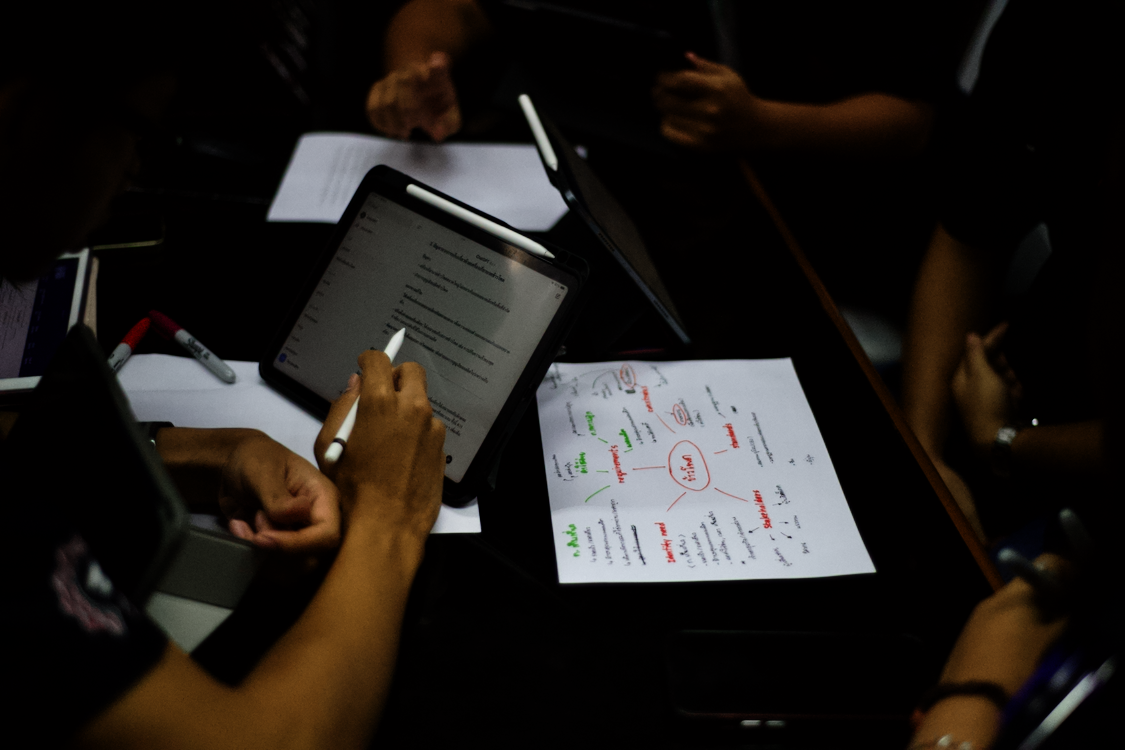
|
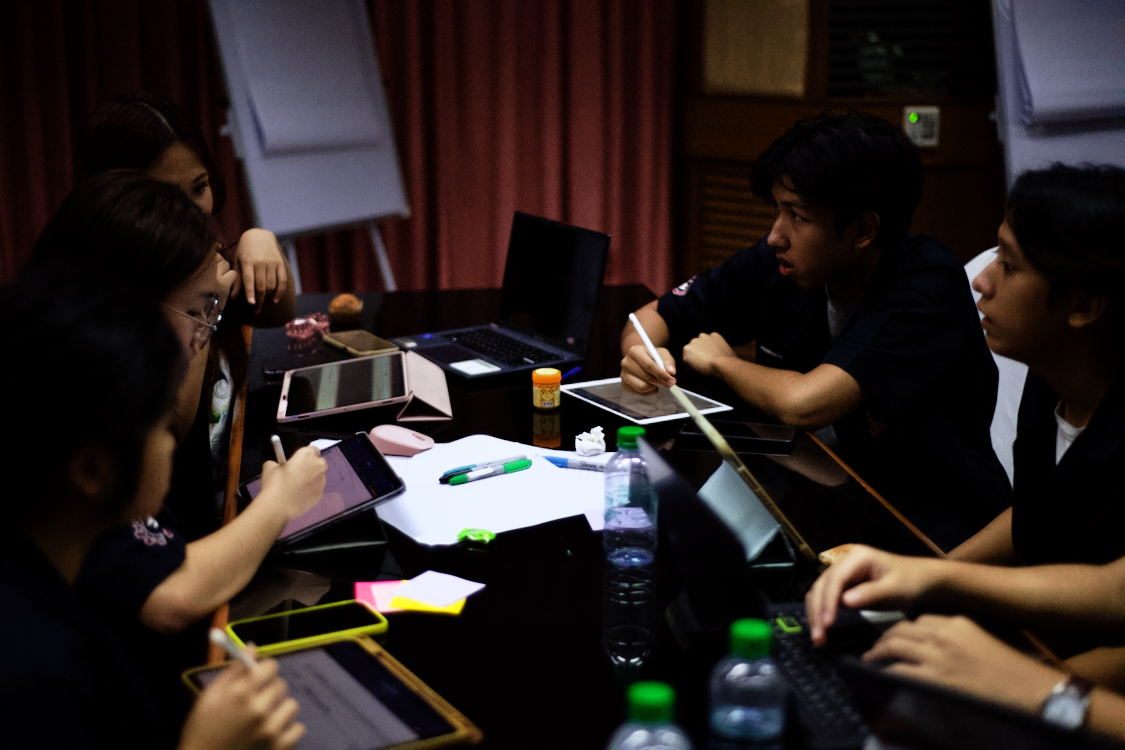
|
I always find it encouraging to see students in this sort of environment. In the classroom, there will sometimes be a few who are focused more on their smartphones than the teaching, while some may be even less-engaged with the world around them. In this event, as we have seen at Invent for the Planet, the entire class seems to be fully engaged with the project, albeit some have different tasks within the group. The format is far more likely to engage the attention of most of the students (with a few exceptions).
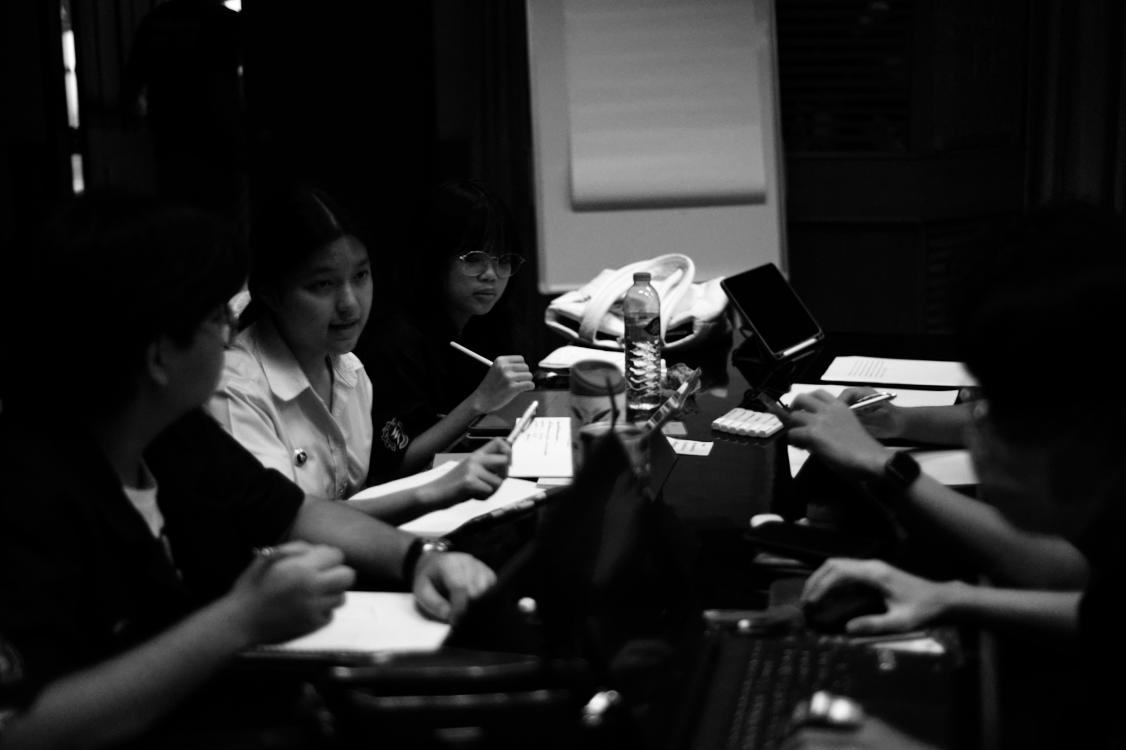
|
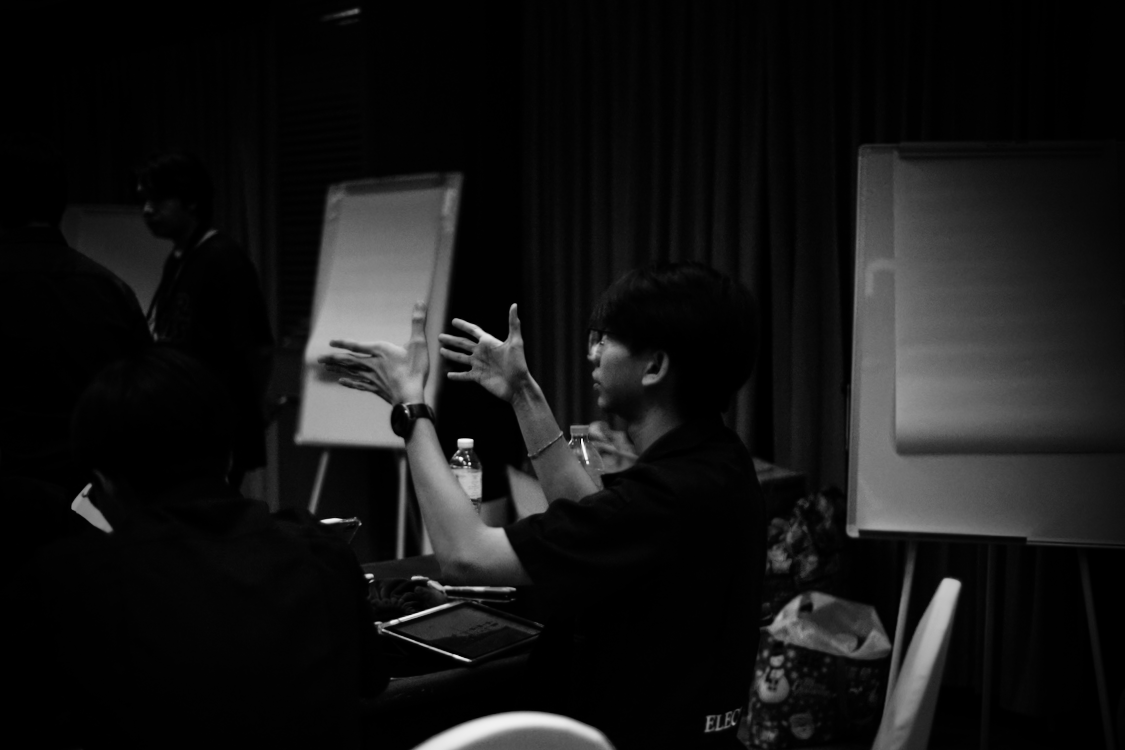
|
While teachers chat to the students from time to time and occasionally interrupt with suggestions or strategic comments, the students have the freedom to walk around, chat to members of other groups, or leave the room when necessary. This instills in them a sense of responsibility that a formal classroom may never achieve. It also allows the students to be more creative when working on their solutions, bringing out some inspiring design ideas, which is why some of them chose to be engineers in the first place. It is also interesting to see the way the teachers respond to the students, and vice versa, which builds more trust between them than a rigid class environment would.
I look forward to more of this.
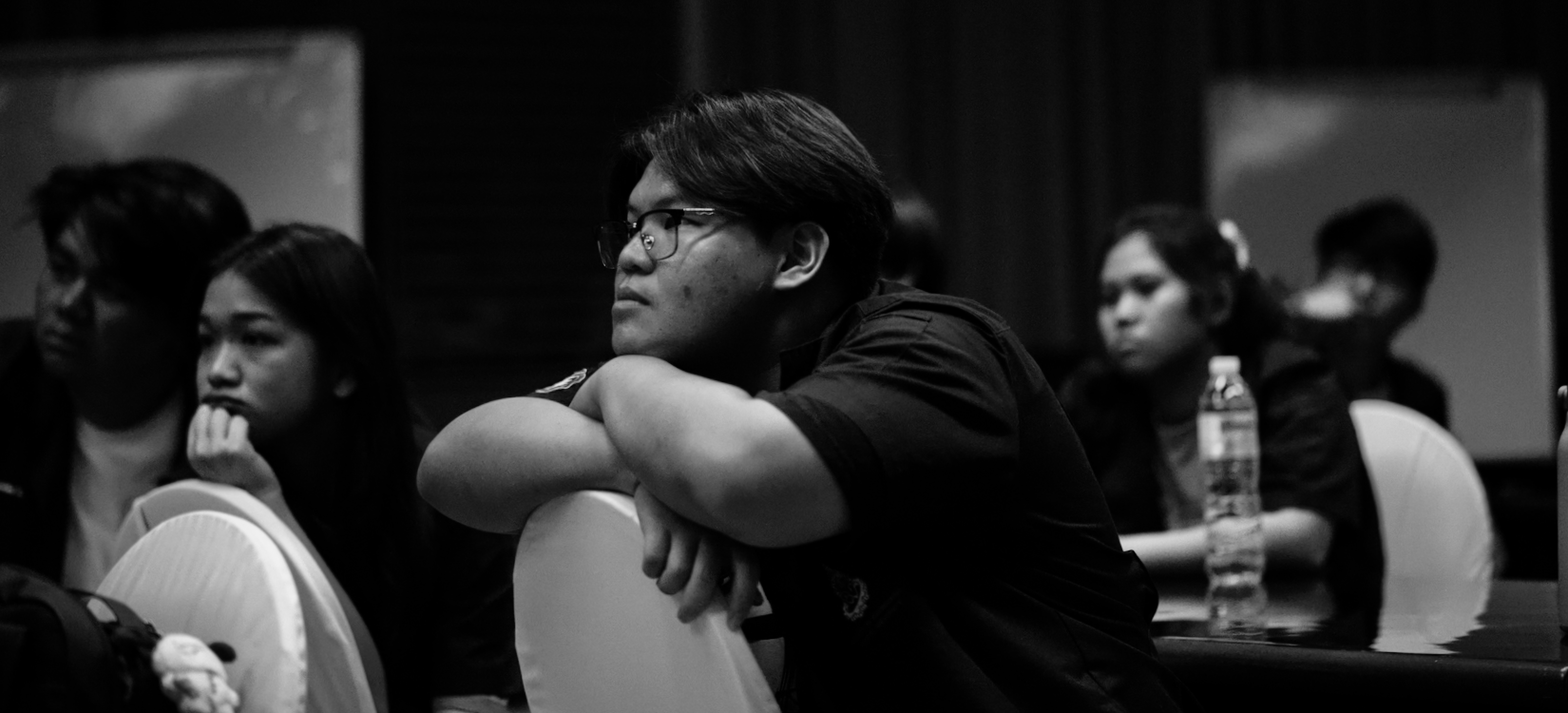 >
>
Graham K. Rogers teaches at the Faculty of Engineering, Mahidol University in Thailand. He wrote in the Bangkok Post, Database supplement on IT subjects. For the last seven years of Database he wrote a column on Apple and Macs. After 3 years writing a column in the Life supplement, he is now no longer associated with the Bangkok Post. He can be followed on X (@extensions_th). The RSS feed for the articles is http://www.extensions.in.th/ext_link.xml - copy and paste into your feed reader.

For further information, e-mail to
Back to
eXtensions
Back to
Home Page